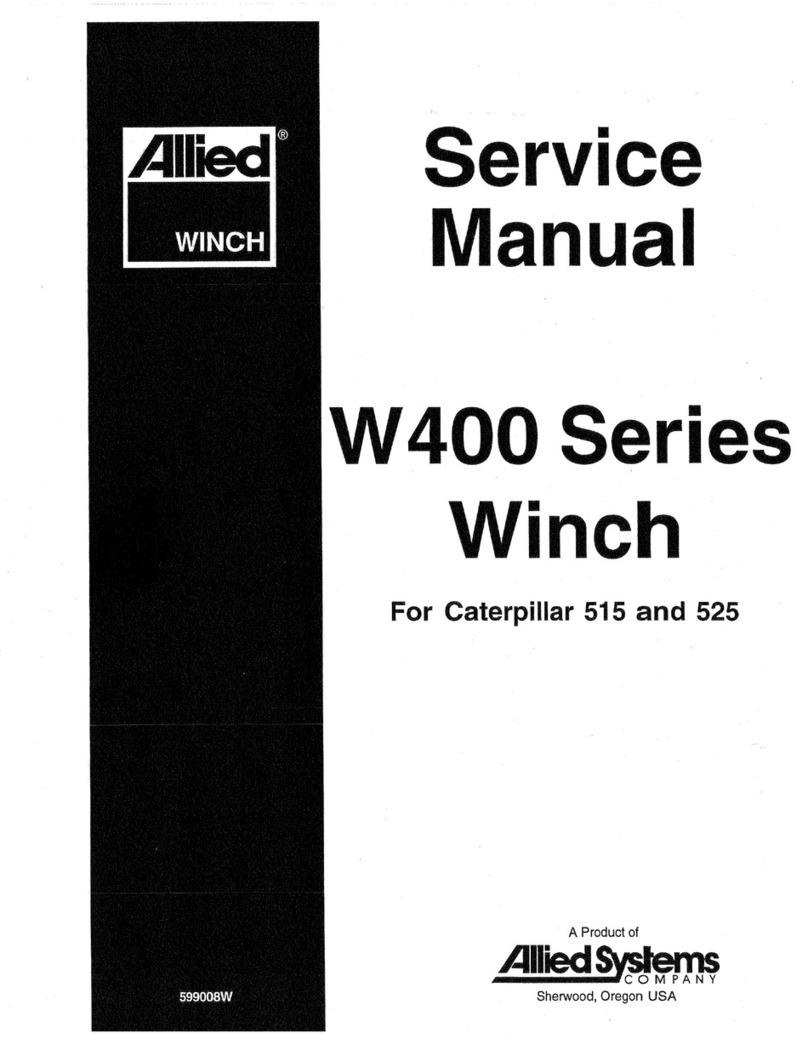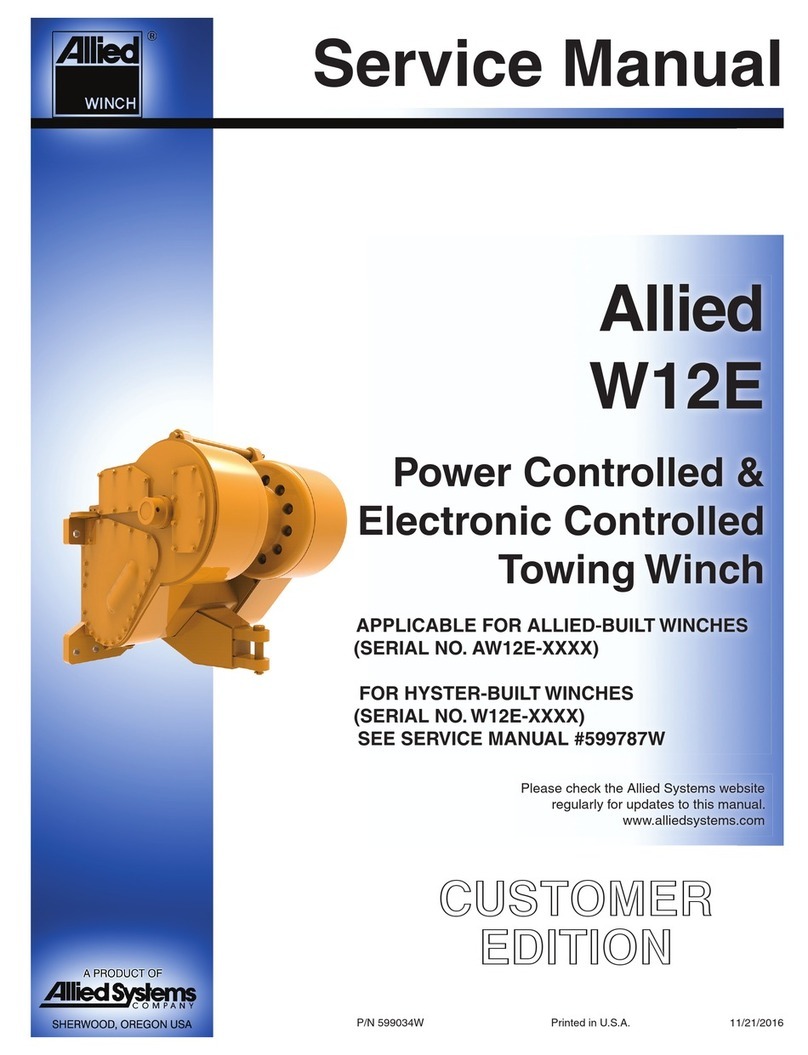
v
Contents
Safety Summary .........................................................i
General ....................................................................1-1
Introduction...............................................................1-1
Description ...............................................................1-1
Unit Identification ...............................................1-2
Serial Number Codes.........................................1-3
Nameplate .........................................................1-3
Specifications ...........................................................1-4
Drum Wire Rope Capacities...............................1-4
Hydraulic Specifications.....................................1-4
Oil Specifications ...............................................1-4
Oil Capacity........................................................1-4
Maintenance Decal ............................................1-5
Torque Specifications.........................................1-5
Gear Train ................................................................1-6
Operation and Control ..............................................1-7
Hydraulic System......................................................1-8
Motor................................................................. 1-9
Brake................................................................1-10
Planetary Reducer ...........................................1-11
Counterbalance Relief Manifold .......................1-12
Control Manifold ...............................................1-13
Sequence of Operation...........................................1-14
Option Code B
BRAKE-ON ......................................................1-14
LINE-IN ............................................................1-16
LINE-OUT ........................................................1-18
BRAKE-OFF ....................................................1-20
Option Code D
BRAKE-ON ......................................................1-22
LINE-IN ............................................................1-24
LINE-IN Hi-Speed ............................................1-26
LINE-OUT ........................................................1-28
BRAKE-OFF ....................................................1-30
Komatsu D155AX-6/7 (K64)
BRAKE-ON ......................................................1-32
LINE-IN ............................................................1-34
LINE-OUT ........................................................1-36
BRAKE-OFF ....................................................1-38
Schematics.............................................................1-41
Troubleshooting......................................................2-1
General.....................................................................2-1
Mechanical/Hydraulic Troubleshooting Charts..........2-1
Service.....................................................................3-1
General ....................................................................3-1
Maintenance.............................................................3-1
Maintenance Points............................................3-1
Maintenance Schedule ......................................3-1
Hydraulic System Pressure Tests Ports .............3-2
Checks Before Operation...................................3-3
Checks During Operation...................................3-3
Hydraulic System Pressure Checks .........................3-3
Preparation.........................................................3-3
Pilot Supply Pressure Check..............................3-4
Motor Supply Pressure Check ...........................3-5
Brake Pressure Check .......................................3-6
BRAKE-OFF Pressure Check............................3-7
Brake Valve Pressure Check & Adjustment .......3-8
LINE-IN Pressure Check....................................3-9
LINE-OUT Pressure Check..............................3-10
PCOR Pressure Check ....................................3-11
Repairs ...................................................................4-1
General ....................................................................4-1
Winch Removal ........................................................4-1
Winch Disassembly ..................................................4-1
Intermediate Shaft Removal...............................4-2
Drum Shaft & Drum Removal.............................4-4
Hydraulic System Disassembly..........................4-8
Motor Shaft Removal & Disassembly...............4-10
BRAKE-OFF Clutch Disassembly....................4-14
Brake Disassembly ..........................................4-16
Planetary Reducer Disassembly......................4-18
Winch Assembly .....................................................4-20
Visual Inspection..............................................4-20
Brake Assembly ...............................................4-22
BRAKE-OFF Clutch Assembly.........................4-24
Motor Shaft Assembly & Installation ................4-28
Planetary Reducer Assembly...........................4-31
Hydraulic System Assembly.............................4-34
Drum & Drum Shaft Installation .......................4-36
Intermediate Shaft Installation .........................4-42
Contents






























